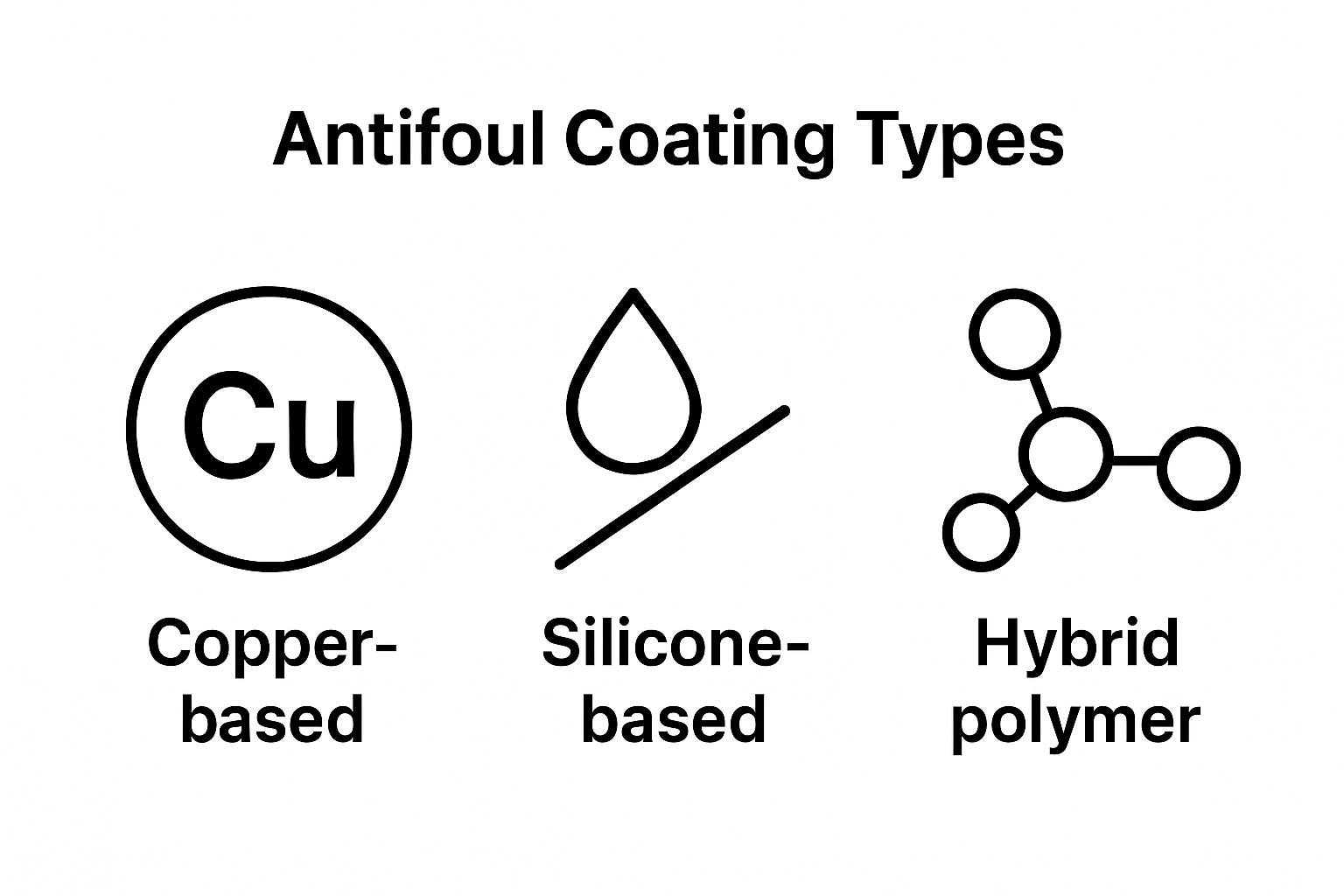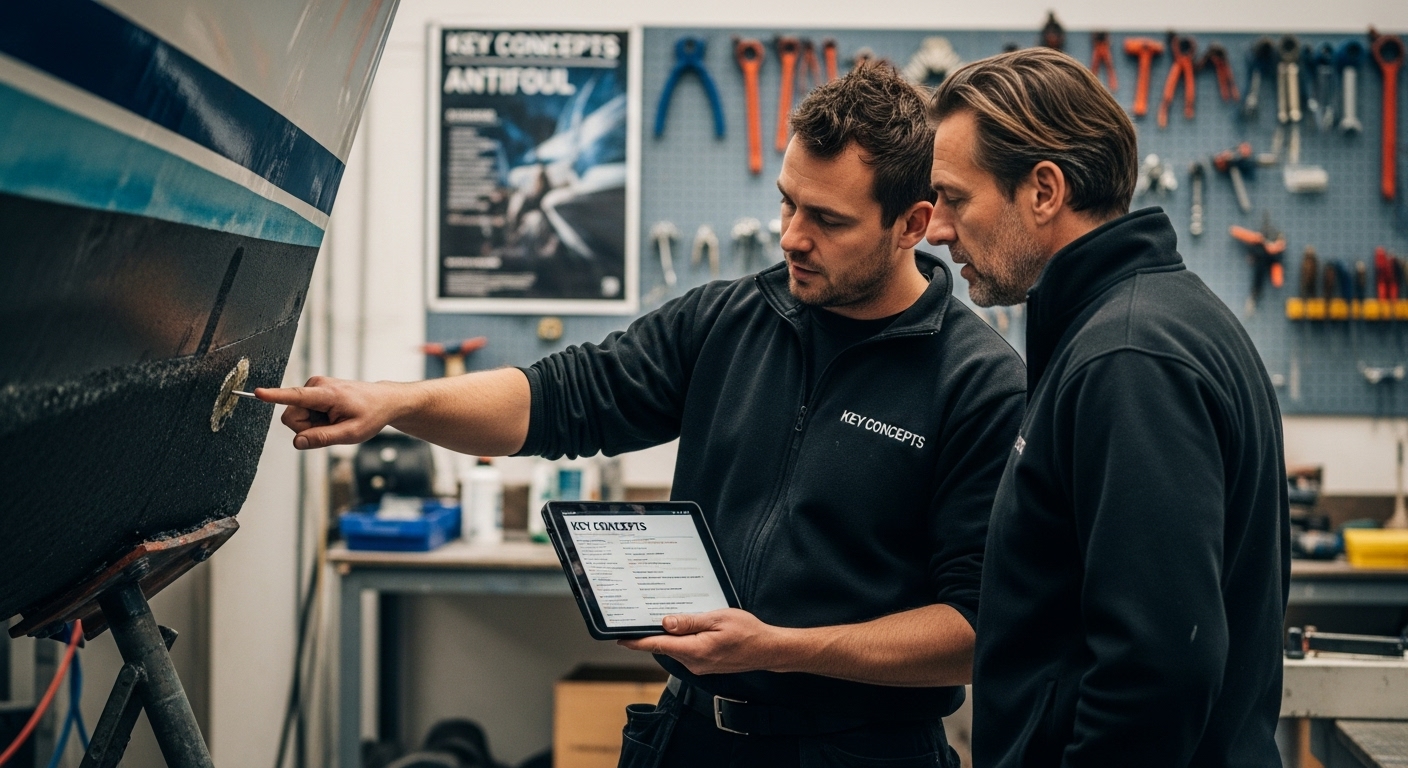Understanding Antifoul: Essential Industry Terms Explained
- andy80165
- Sep 22
- 7 min read

Marine life can turn the bottom of a boat into its own private neighborhood, with algae and barnacles hitching a ride on just about any vessel left untreated. But did you know a thick layer of growth can slow a boat down and cut fuel efficiency by up to 40 percent? That fact alone might grab attention, but the real surprise is what stops this underwater takeover. It all comes down to antifoul technology, and the way it secretly battles nature’s persistence with chemistry and innovation.
Table of Contents
Quick Summary
What is Antifoul and Why is it Used in the Maritime Industry?
Antifoul represents a specialized protective coating applied to boat and ship hulls designed to prevent marine organism growth. Understanding the complex marine ecosystem protection reveals why this technology is crucial for maritime operations.
The Science Behind Antifoul Protection
Marine vessels constantly face biological challenges from organisms like algae, barnacles, and mollusks that attach themselves to underwater surfaces. These marine hitchhikers can create significant problems for boat performance and structural integrity.
When marine organisms accumulate on a hull, they generate increased drag, reduce fuel efficiency, and potentially cause long-term damage to the vessel’s surface.
Antifoul works through specialized chemical compounds that create an environment hostile to marine organism attachment. The coating typically contains biocidal agents that prevent biological growth while maintaining a smooth hull surface. Modern antifoul technologies have evolved to balance effective marine protection with environmental sustainability.
Key Benefits for Maritime Operations
Boat owners and maritime professionals recognize antifoul as a critical maintenance strategy. The primary advantages include:
Improved vessel speed and fuel efficiency
Reduced marine organism colonization
Extended vessel lifespan and reduced maintenance costs
Minimized potential environmental contamination
By selecting appropriate antifoul options for boat owners, marine professionals can significantly enhance vessel performance and protection. Antifoul is not just a protective measure but a strategic investment in maritime equipment longevity and operational effectiveness.
The Importance of Antifouling for Boat Maintenance
Boat maintenance represents a critical investment for maritime enthusiasts, with antifouling playing a pivotal role in preserving vessel performance and longevity. Research from the Australian maritime protection authorities highlights the significant impact of proper marine vessel maintenance.
Economic and Performance Implications
Neglecting antifoul maintenance can lead to substantial financial consequences. Marine organisms rapidly colonize boat hulls, creating layers of biological growth that dramatically increase hydrodynamic resistance. This buildup creates additional drag, reducing vessel speed and fuel efficiency by up to 40%. The economic impact extends beyond fuel consumption, potentially causing long-term structural damage and expensive repair requirements.
Long-Term Vessel Protection Strategies
Effective antifouling strategies involve more than periodic painting. Boat owners must understand the complex interactions between marine environments and hull surfaces. Key considerations include:
Selecting appropriate antifoul compounds based on specific marine conditions
Regular inspection and professional assessment of hull integrity
Understanding environmental regulations surrounding marine coatings
Implementing proactive maintenance schedules
Professional marine maintenance experts recommend understanding when to renew antifoul for your boat to maximize vessel performance and minimize potential environmental contamination. Strategic antifouling represents a comprehensive approach to maritime asset management, protecting both the vessel’s structural integrity and operational efficiency.
How Antifouling Paint Works to Protect Your Vessel
Antifouling paint represents a sophisticated marine technology designed to prevent biological attachment on vessel surfaces. Australian maritime research highlights the critical role these specialized coatings play in marine vessel maintenance.
Chemical Warfare Against Marine Organisms
The fundamental mechanism of antifouling paint involves creating a chemical environment that discourages marine organism settlement. These specialized coatings contain biocidal compounds that make hull surfaces inhospitable to algae, barnacles, and other marine life. The paint releases low levels of toxic substances that deter biological attachment without causing widespread environmental damage.
Technological Approaches to Surface Protection
Modern antifouling technologies employ multiple strategies to prevent marine colonization. Key technological approaches include:
Biocidal copper-based compounds that disrupt marine organism metabolism
Silicon-based slippery coatings that prevent initial biological attachment
Self-polishing copolymer technologies that gradually release protective agents
Advanced polymer structures that create dynamic surface interactions
Boat owners can explore detailed antifoul removal techniques to maintain optimal vessel performance. Understanding these technological innovations helps marine professionals select the most effective protection strategies for their specific maritime environments.
Key Concepts and Terms Related to Antifoul
Navigating the complex world of marine protection requires understanding specialized terminology and technical concepts. Research from Australian maritime authorities provides insights into the intricate landscape of antifoul technologies.
Critical Technical Terminology
Boat owners and marine professionals must familiarize themselves with specific antifoul terminology to make informed maintenance decisions. Biofouling represents the accumulation of microorganisms, plants, and animals on vessel surfaces. This biological buildup can significantly impact vessel performance, creating drag and reducing overall efficiency. Related technical terms include self-polishing copolymers, which are advanced coating technologies that gradually release protective agents, and biocidal compounds, chemical substances designed to prevent marine organism settlement.
Essential Classification of Antifoul Technologies
Antifoul technologies can be broadly categorized based on their chemical composition and protective mechanisms. Understanding these classifications helps marine professionals select appropriate solutions for specific environmental conditions

:
Copper-based antifouling: Traditional technology using copper compounds to deter marine organism attachment
Silicone-based coatings: Advanced non-toxic solutions that create slippery surfaces
Hybrid polymer systems: Innovative technologies combining multiple protective mechanisms
Environmentally sensitive formulations: Emerging technologies focused on minimal marine ecosystem impact
Boat owners can explore antifoul compatibility for their specific vessel requirements to ensure optimal protection and performance. Comprehensive understanding of these technical nuances empowers marine professionals to make strategic maintenance decisions.
Below is a comparison table summarizing different antifoul technologies, their mechanisms, and environmental impacts to help boat owners understand which solutions best fit their needs.

Environmental Considerations and Regulations of Antifouling
The maritime industry faces complex environmental challenges related to antifouling technologies. Australian maritime protection regulations provide critical guidance for responsible marine ecosystem management.
Ecological Impact of Marine Coatings
Antifouling technologies represent a delicate balance between vessel performance and marine environmental protection. Historically, many coating compounds contained toxic substances like tributyltin (TBT) that caused significant ecological damage. Modern environmental regulations now mandate the development of more sustainable marine coating solutions that minimize harmful chemical leaching into marine ecosystems.
Regulatory Frameworks and Compliance Standards
Marine professionals must navigate increasingly stringent environmental protection guidelines. Key regulatory considerations include:
Prohibition of organotin-based compounds in marine coatings
Mandatory environmental impact assessments for new antifouling technologies
International maritime conventions governing chemical composition of vessel coatings
Regular monitoring and reporting of marine ecosystem interactions
Boat owners can explore comprehensive antifoul compatibility guidelines to ensure their vessel maintenance practices align with current environmental protection standards. Understanding these regulatory frameworks helps marine professionals make responsible technological choices that protect both vessel performance and marine biodiversity.
Ready to Master Antifoul? Get Expert Care for Your Vessel
If technical terms like biofouling, self-polishing copolymers, or antifoul compatibility feel overwhelming, you are not alone. Many boat owners struggle to keep up with complex antifoul requirements, risking vessel damage, extra fuel costs, and lost time on the water.
This table defines key antifoul terms and concepts, making it easier for readers to decode specialized language that often appears in the marine industry.

Let the mobile professionals at Lightning Boat Builders take out the guesswork. Whether you need tailored antifoul application, removal, or custom fiberglass repairs, our team explains every step using the right terms. Protect your vessel and enjoy peace of mind. Contact us now for your personalized consultation and see how the right antifoul solutions make all the difference.
Frequently Asked Questions
What is antifoul, and what is its purpose in the maritime industry?
Antifoul is a specialized protective coating applied to boat and ship hulls to prevent the growth of marine organisms like algae, barnacles, and mollusks. Its primary purpose is to enhance vessel performance, increase fuel efficiency, and protect the hull from long-term damage.
How does antifouling paint work to protect vessels from marine life?
Antifouling paint works by using chemical compounds that create an inhospitable environment for marine organisms. These coatings usually contain biocidal agents that discourage the attachment of marine life while maintaining a smooth surface for optimal vessel performance.
What are the main benefits of using antifoul on boats and ships?
The main benefits of using antifoul include improved vessel speed and fuel efficiency, reduced marine organism colonization, extended vessel lifespan, reduced maintenance costs, and minimized potential environmental contamination.
How often should antifoul be reapplied for optimal effectiveness?
The frequency of antifoul reapplication depends on marine conditions and the type of antifoul used. Regular inspections and professional assessments are recommended to determine when to renew antifoul, ensuring maximum performance and protection of the vessel.
Recommended
Comments